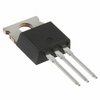-
The maximum operating frequency of the STP6NC60FP is typically up to 100 kHz, but it can be used at higher frequencies with proper design and layout considerations.
-
To ensure reliability in high-temperature applications, it's essential to follow proper thermal management practices, such as providing adequate heat sinking, using thermal interface materials, and keeping the device within its recommended operating temperature range.
-
Key considerations for PCB layout and design include minimizing parasitic inductance and capacitance, using a solid ground plane, and keeping high-current paths short and wide to reduce voltage drops and electromagnetic interference (EMI).
-
To protect the STP6NC60FP from ESD, it's essential to follow proper handling and storage procedures, use ESD-protective packaging, and implement ESD-protection circuits in the design, such as TVS diodes or ESD-protection arrays.
-
The total gate charge (Qg) of the STP6NC60FP affects the gate drive requirements and the overall efficiency of the design. A higher Qg requires more gate drive current, which can impact the design's power consumption and thermal performance.
 STP6NC60FP datasheet
by STMicroelectronics
STP6NC60FP datasheet
by STMicroelectronics
 STP6NC60FP datasheet
by STMicroelectronics
STP6NC60FP datasheet
by STMicroelectronics